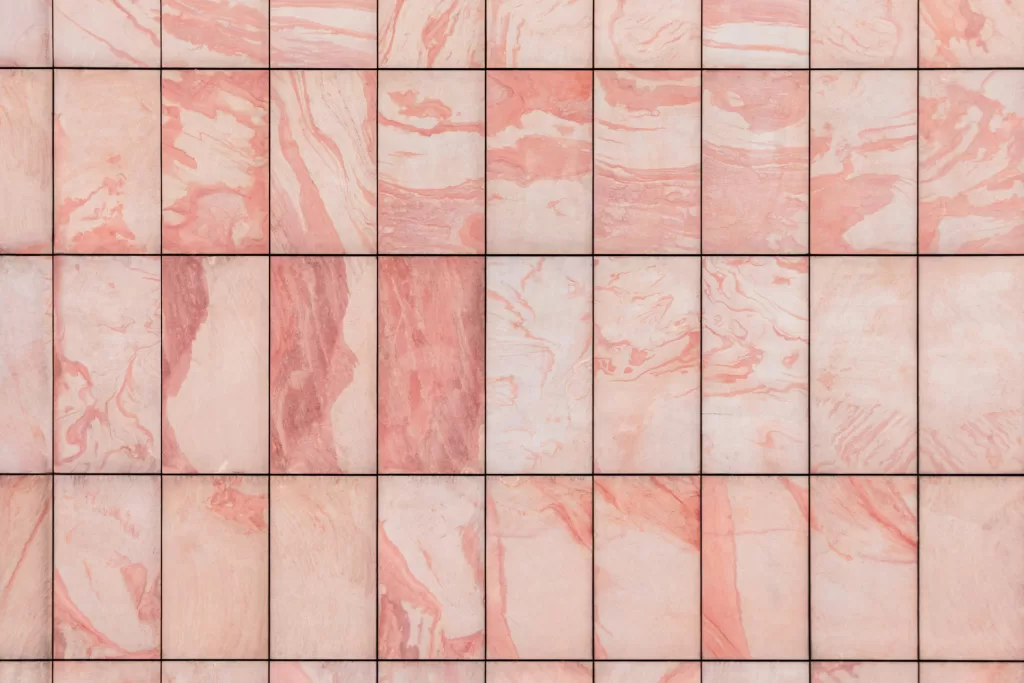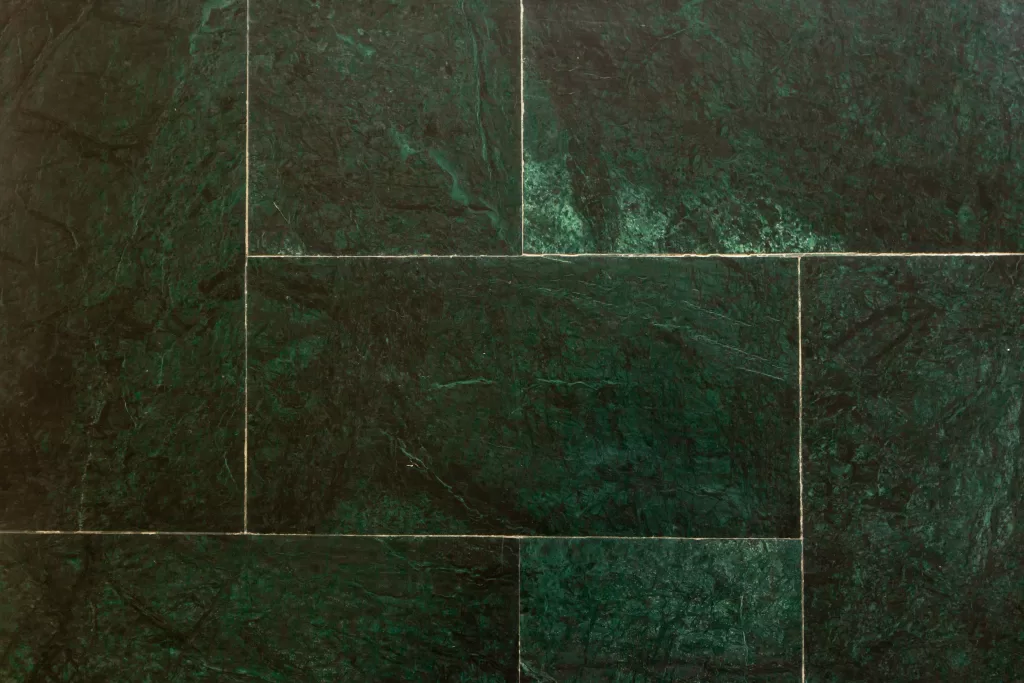While ceramic tile is a popular choice for floors and walls due to its durability and aesthetic appeal, there are times when you may want to remove it. Removing ceramic tile by yourself means taking out tiles from floors or walls without professional help. It’s a common project for updating or changing existing tiles.
However, before you start, it’s important to think about a few things. Considering factors like the size of the area, the type of tiles and adhesive, and the condition of the existing tiles and substrate can make the job easier.
It also helps you prepare for any challenges you might face along the way. Taking these factors into account ensures a smoother and more successful tile removal project.
In this blog post, your expert team at Alpha Living will break down everything you need to know about removing ceramic tile, both using the DIY method and alternative options, such as hiring professional contractors. Let’s begin.

What Is Ceramic Tile?
Ceramic tile is a versatile and popular material used for flooring and wall surfaces in homes and commercial spaces. One of its main advantages is durability. Ceramic tile is resistant to wear, scratches, and moisture, making it suitable for high-traffic areas like kitchens and bathrooms.
Additionally, ceramic tile comes in a wide range of colors, patterns, and textures, offering endless design possibilities. This makes it a favorite among homeowners and designers alike for its ability to enhance the aesthetic appeal of any space.
However, ceramic tile can be prone to cracking or chipping if heavy objects are dropped on it. Despite this drawback, with proper maintenance, ceramic tile can last for decades.
It may require periodic sealing to maintain its appearance and water resistance, but overall, ceramic tile is a durable and stylish option for flooring and wall coverings.
Assessing the Scope of the Project
Before diving into removing ceramic tiles, it’s essential to understand the scope of the project. Start by estimating the size of the area to be tiled. Measure the space carefully to determine the amount of work involved and the materials needed.
Next, identify the type of ceramic tile and adhesive used. Different types of tiles require different removal methods, and the adhesive used can affect how difficult the tiles are to remove. Knowing this information will help you prepare the right tools and techniques for the job.
Additionally, evaluate the condition of the existing tiles and substrate. Check for any cracks, loose tiles, or signs of damage. This assessment will help you anticipate any challenges you might encounter during the removal process and plan accordingly.
When you assess these factors upfront, you can better prepare yourself for a successful ceramic tile removal project.
Gathering the Necessary Tools and Materials
To ensure a smooth ceramic tile removal process, it’s crucial to gather all the necessary tools and materials beforehand.
Start by collecting the basic tools required for ceramic tile removal. These may include a hammer, chisel, pry bar, putty knife, and a scraper. These tools will help you loosen and remove the tiles from the surface.
In addition to basic equipment to replace ceramic floor tiles, consider gathering additional materials for safety and efficiency. Safety gear such as gloves, safety glasses, and a dust mask are essential to protect yourself from dust and debris during the removal process. Knee pads can also provide added comfort and protection while working on your knees.
Finally, consider the cost considerations for purchasing or renting tools. Evaluate your budget and determine whether it’s more cost-effective to buy or rent the necessary tools for the project.
Keep in mind that investing in quality tools may save you time and money in the long run by ensuring a smoother and more efficient removal process.
Understanding Potential Risks and Challenges
Before embarking on a ceramic tile removal project, it’s essential to be aware of the potential risks and challenges involved.
Health hazards associated with ceramic tile removal include exposure to dust and debris. Dust particles can irritate the respiratory system and may contain harmful substances, so wearing a dust mask is important for protection.
Additionally, there’s a risk of injury from sharp edges and heavy lifting during the removal process. It’s crucial to handle tools and materials with care and use proper lifting techniques to avoid strains or accidents.
Another challenge to consider is the potential damage to underlying surfaces. Removing tiles can sometimes cause damage to the substrate, especially if it’s fragile or poorly constructed. Taking precautions and working carefully can help minimize the risk of damage.
Furthermore, unforeseen complications such as hidden pipes or wires behind the tiles can pose challenges during removal. Before starting the project, it’s wise to inspect the area carefully and be prepared to address any unexpected issues that may arise.
Safety Precautions
Ensuring safety is paramount when removing ceramic tiles. Here are some essential precautions and measures to consider:
Wearing appropriate safety gear is crucial to protect yourself during the removal process. This includes respiratory protection to prevent inhaling dust and debris, as well as eye and ear protection to shield against potential hazards. Additionally, gloves and knee pads provide protection from sharp edges and offer added comfort while working.
Securing the work area is vital to prevent accidents. Clearing obstructions and tripping hazards from the workspace minimizes the risk of falls or injuries. Blocking off adjacent rooms or areas also helps to prevent accidents and ensures that bystanders are kept safe from any debris or falling tiles.
By taking these precautions, you can create a safer working environment and reduce the likelihood of accidents during ceramic tile removal.
Planning the Removal Process
Planning the removal process is essential for a successful ceramic tile removal project. By breaking down the steps involved and setting a realistic timeline, you can ensure a smoother and more efficient process.
Preparing the Workspace
Before beginning the ceramic tile removal process, it’s crucial to prepare the workspace properly. This involves clearing the area of any furniture or obstacles, ensuring you have enough space to work comfortably and safely.
Additionally, take the time to clean the floor or wall surface to remove any dirt or debris. A clean workspace will make the removal process smoother and more efficient.
Loosening and Removing Tiles
Using the right tools is key to loosening and removing ceramic tiles without damaging the underlying substrate. A hammer and chisel are commonly used for this task.
Work carefully and patiently to gently loosen the tiles from the surface, taking care to avoid causing any damage. By working methodically, you can minimize the risk of accidents or harm to the surface underneath.
Scraping Away Adhesive Residue
After the tiles are removed, you may encounter adhesive residue left behind on the substrate. This residue needs to be removed to ensure a smooth and even surface for the installation of new tiles.
Use a scraper or adhesive remover to clean the surface thoroughly, taking care to remove all traces of ceramic floor tile adhesive. This step is essential for achieving a professional-looking finish and ensuring that the new tiles adhere properly.
Cleaning and Inspecting the Substrate
Once the adhesive residue has been scraped away, it’s time to clean and inspect the substrate. Clean the surface to remove any dust or debris that may have accumulated during the removal process.
Take this opportunity to inspect the substrate for any damage or imperfections that may need to be addressed before installing new tiles. By thoroughly cleaning and inspecting the substrate, you can ensure that your new tiles will adhere properly and look their best once installed.
Alternatives to DIY Tile Removal
While DIY tile removal can be a viable option for many homeowners, there are alternatives to consider, especially for complex projects or situations where removal may not be feasible.
Hiring Professional Contractors
For large areas or projects requiring specialized equipment or expertise, hiring professional contractors may be the best option. Professional contractors have the knowledge, experience, and tools necessary to tackle complex removal projects efficiently and safely.
They can also ensure that the job is done correctly, minimizing the risk of damage to underlying surfaces and maximizing the quality of the end result.
Exploring Alternative Flooring Options
In some cases, removing ceramic tiles may not be feasible or practical. In such situations, exploring alternative flooring options may be a better choice.
Options such as floating floors, vinyl plank, or laminate flooring can be installed directly over existing tiles, saving time and money on removal costs. These alternative flooring options can provide a fresh look and update the space without the hassle of removing tiles.

What To Consider Before Removing Ceramic Tile

Compare Quotes from Top-rated Bathroom Remodel contractors in your area.
The bottom line is that before removing ceramic tiles, remember to consider key factors, plan thoroughly, and prioritize safety. Make an informed decision based on your circumstances to ensure a successful project.
Transform your home effortlessly with Alpha Living. Our platform connects homeowners with top-notch flooring contractors in their area. Simply enter your zip code, and let us handle the rest.
Whether you’re renovating your kitchen or upgrading your bathroom, Alpha Living has you covered. Get started today and take the first step towards your dream home!





Facebook
Comments